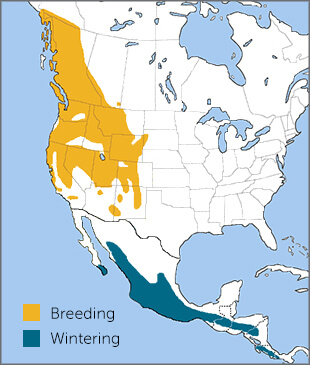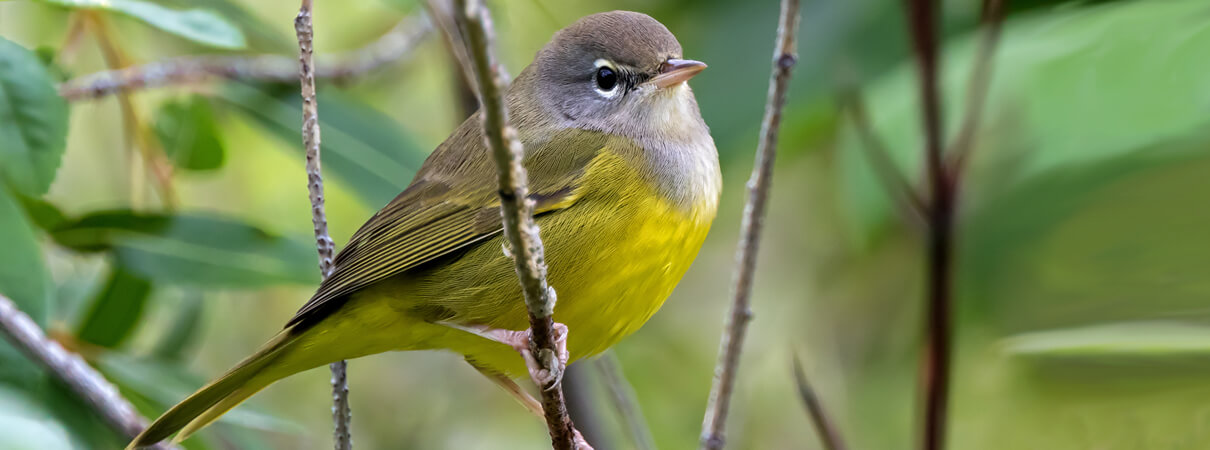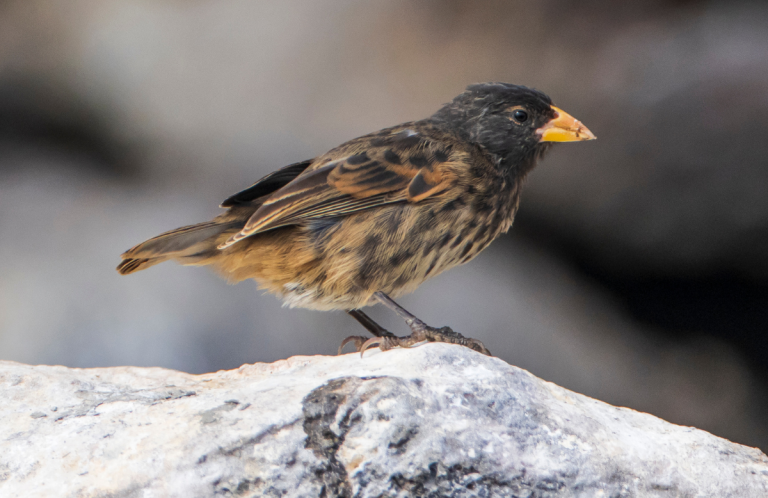
MacGillivray's Warbler range map by Birds of the World, https://birdsoftheworld.org, maintained by the Cornell Lab of Ornithology.
The MacGillivray's Warbler spends most of its time lurking in dense underbrush, like its close relative, the Kentucky Warbler. When this western warbler pops into view, birders identify it by its bright yellow underside, greenish upperparts, and gray hood, with telltale white arcs set above and below its dark eyes.
Identity Crisis: Bird with Two Names
The MacGillivray's Warbler was named by John James Audubon in honor of his friend and fellow ornithologist William MacGillivray, who helped him write his Ornithological Biography. Audubon bestowed this name upon the little bird even though another colleague, the ornithologist John Townsend, had already christened the bird "Tolmie's Warbler" to honor Dr. William Tolmie, a doctor, explorer, and fur trader who collected the first specimen.
No one knows exactly how Audubon's new name came to supersede Townsend's. Perhaps it was because Audubon was the first to draw the bird — although his art was based on a skin bought from Townsend that had originally been collected by Dr. Tolmie! In any event, the MacGillivray's Warbler does still bear the species name tolmiei in honor of its original namesake.
More Than a Mourning
The MacGillivray's Warbler and the Mourning Warbler, a closely related eastern species, were once considered the same species, as the two have similar plumages and hybridize where their ranges overlap. However, more in-depth research revealed differences in morphology, song, and breeding ranges that supported declaring them two distinct species. You can compare the two species' songs below:
(Audio of MacGillivray's Warbler song by Bruce Lagerquist, XC426200. Accessible at www.xeno-canto.org/426200; Audio of Mourning Warbler song by Paul Marvin, XC173754. Accessible at www.xeno-canto.org/173754.)
Leapfrogging North
MacGillivray's Warblers breed from southern Alaska and the Yukon south to California and east to South Dakota's western boundary. (There is an isolated and small breeding population in northern Mexico as well.) Two subspecies are recognized, separated by color and tail length; one breeds to the west of the Cascades/Sierra Nevada mountain range, and one to the east.
Like other western warbler species such as the Townsend's Warbler and Hermit Warbler, the MacGillivray's Warbler is highly migratory. This species leaves the United States and Canada each fall via nocturnal flights to wintering grounds in Mexico and Central America.

MacGillivray's Warbler during fall migration. Photo by Ian Maton, Shutterstock
Migration studies reveal that at winter's end, MacGillivray's Warblers employ a "leapfrog" pattern during their spring migration, with birds from the southernmost parts of the wintering range passing intermediate populations to end up breeding in the northernmost parts of the species' range.
Feeding and Breeding
The MacGillivray's Warbler forages for insects on the ground in the manner of a Swainson's or Hooded Warbler, flicking its tail from side to side as it moves through thick undergrowth. It gleans prey from leaves or among low branches and along the bark of trees and shrubs. Immature MacGillivray's Warblers also have been seen taking sap from “wells” drilled by Red-naped Sapsuckers.
Males of this shrub-haunting species sing frequently throughout the breeding season to defend nesting territories. The female builds an open-cup nest of weed stems, bark shreds, and dry grass amid dense shrubs, usually 2 to 3 feet above the ground. She incubates alone, but both parents feed the nestlings.
Brown-headed Cowbirds sometimes parasitize these warblers, laying their eggs in their nests so the hosts raise their young. This happens more frequently in fragmented habitats.
Shrub Hubs and BirdScapes
Like the Chestnut-sided Warbler, the MacGillivray's Warbler has declined as cut-over woodlands have regrown in even-aged stands. These species respond positively to forest management activities that create and preserve semi-open habitat with shrubby areas for nesting. Tree-harvesting methods that leave some native tree cover and associated undergrowth can provide these birds with favorable places to breed.
However, more southerly populations are threatened by the loss of riparian willow and cottonwood habitats to grazing, agriculture, and residential development.
ABC's BirdScapes approach to conservation guides restoration of key habitats, including riparian corridors used by the MacGillivray's Warbler, as well as declining subspecies such as the Southwestern Willow Flycatcher and the western population of the Yellow-billed Cuckoo.
ABC was recently involved in the creation of the Central California Coast Joint Venture, which stretches from Santa Cruz and Monterey south toward Point Conception, and includes some areas where MacGillivray's Warblers breed and migrate. The JV area also provides habitat for many other bird species of concern, such as the Western Snowy Plover and Marbled Murrelet.
ABC also has initiatives in place that tackle threats to all birds, including our Cats Indoors program, which encourages pet owners to keep cats and birds safe.
Donate to support ABC's conservation mission!



















































